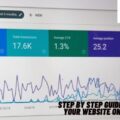One of the more successful marketing strategies is cold emailing – cold emails are short, powerful, and intriguing. They play an essential role in developing a line of communication between you and the recipient. In this article, we will be going over tips and tricks of cold emailing and how to expand your outreach with simple steps.
What is a Cold Email?
A cold email is considered the initial correspondence between you and the recipient with hopes to start a conversation. Cold emailing is when you reach out to someone you don’t personally know, but there is a legitimate reason for emailing them. The purpose of cold emails could be for sales, networking, recruiting, and link building. Cold email marketing is when you use the email channel to achieve your daily objectives. To draft successful and meaningful cold emails that will guarantee a response, follow these simple steps.
The Basics: Email Provider, Profile, and Signature
Nobody wants their cold emails to end up in the Spam folder, where they get lost in the clutter of other emails. To make sure your cold email reaches the recipient, you begin by choosing your email provider. You can choose between paid and free email providers. We recommend using G-suite, a paid service, as it allows you to create emails using the corporate domain and has better deliverability.
To set up your profile, make sure you use your real name with a welcoming picture, as well as your real information. Nobody is going to take you seriously if they are suspicious of your identity. Lastly, set up your email signature and make sure it is clean and focuses on what matters.
Set Up a Custom Tracking Domain
The custom tracking domain allows you to track the number of clicks and how many people opened your cold email. You can also increase the deliverability of your cold emails by tracking your progress.
How to Clean your Email List
Make sure to never send an email to an address that does not exist – email providers are quick to find out if you are sending emails to invalid addresses, resulting in your sender reputation taking a dip. There are several email verification tools available that will be of major help, for example, signing up for Bouncer.
Building a Cold Email List
Finding the right audience for your cold emails is the key to building a successful professional relationship. A cold email for the relevant target audience is a good email if you are providing a service that will benefit them. Once you realize your client’s problems, you can work on coming up with a personalized pitch that will encourage the recipient to respond. There are multiple channels and platforms from where you can find emails, for example, Chrome extensions, databases, and the like. When finding email addresses, make sure to not scrape personal emails, only use reliable sources, and it is advised to always save the results in a CSV file.
Writing Cold Emails that Gets Responses
There is a simple formula that you can use that guarantees more responses. First, connect your email account to the sender’s address. To create the perfect cold email, start by clicking on “Create your first campaign,” name your campaign, and then start adding people to the list. The subject line should be eye-catching and should spark an interest – never send tricky or overused subject lines, try not to use caps lock in the subject line, be straightforward, and personalize the subject line to the best of your ability.


